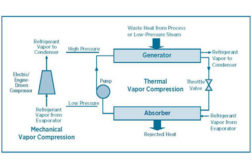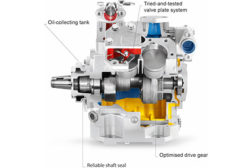- NEWS
- MEDIA
- REFRIGERATION
- BUSINESS 101
- RESIDENTIAL
- COMMERCIAL
- DIRECTORY
- MORE
- INFOCENTER
- MEDIA GROUP
- MAGAZINE
Home » Keywords: » absorption chillers
Items Tagged with 'absorption chillers'
ARTICLES
How Low-Temperature Absorption Chillers Can Optimize Food and Beverage Processing
Have you ever considered the carbon footprint of a cookie or maybe your mid-afternoon latte?
Read More
PMR Releases Study of Absorption Chillers Market
Predicted to display a positive outlook
June 21, 2019
Scroll and Absorption Chillers Market Worth $7.13 Billion by 2022
Market being driven by factors such as increased electricity costs, growing awareness of energy-efficient products
August 22, 2016
Enrgistx Signs US Distributor Agreement with Shuangliang Eco-Energy
Shuangliang provides cooling and heating solutions through recovery of waste heat
July 25, 2016
Using Low-Grade Waste Steam to Power Absorption Chillers
Compared to Mechanical Chillers, They Can Substantially Reduce Operating Costs
May 4, 2015
Jan. 26, 2015: Market for Absorption Chillers Forecast to Reach $983 Million by 2020
Energy Conservation and High Level of Cooling Are Primary Factors Driving Demand
January 26, 2015
July 7, 2014: FuelCell Energy Announces CHP Solution for Medical Center
Fuel Cell Will Generate About 30 Percent of Power Needs; Heat Will Be Used by Absorption Chiller
July 7, 2014
Changes to Compressors, Detectors, Freezers
Developments Reflect Changes in Refrigeration Technologies
Read More
Copyright ©2025. All Rights Reserved BNP Media.
Design, CMS, Hosting & Web Development :: ePublishing




